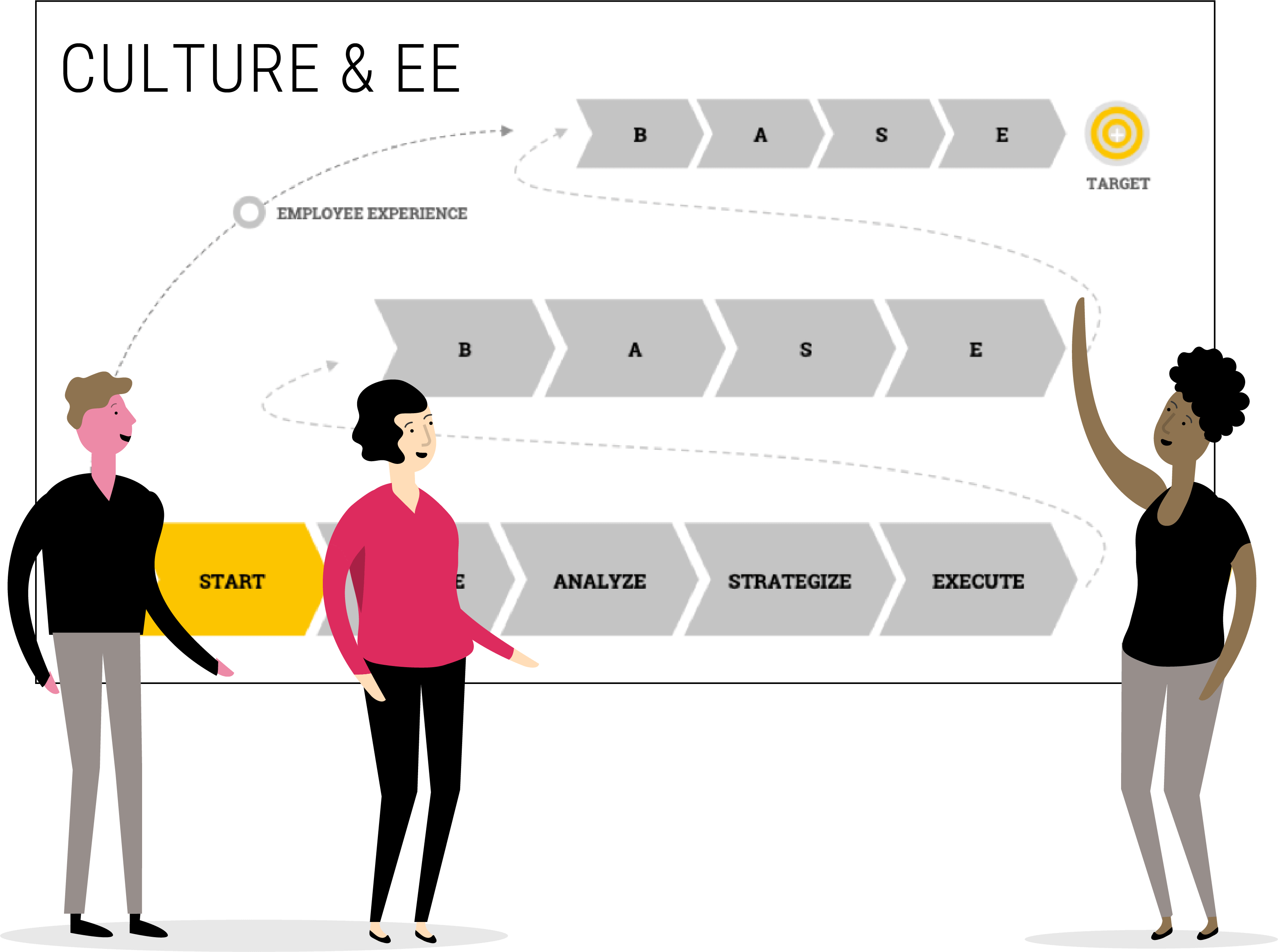The world of work is changing, and attracting and retaining great employees is an increasing struggle. With increased automation, a flexible, gig-based economy, and a younger, more purpose-led workforce, attracting highly skilled employees is only getting harder. And in the future, employee engagement and retention might become the primary basis of competition.
Companies that invest in programs to boost employee engagement today will reap outsized business outcomes over time. Today’s leaders must put company culture and employee experience at the top of their dashboard. If it’s not a C-level strategic priority today, it’s going to show up in the organization’s financial results tomorrow. As our workforce ages and retires, and the requirements of tomorrow’s jobs only increase the need for creativity and innovation, developing a core competency around attracting and retaining new talent must become a strategic priority. Not only does employee satisfaction drive increased productivity, the costs of turnover and recruiting are an enormous hidden burden on company profits.
Across a series of success metrics – retention, customer loyalty, profitability, studies show that business units above the median on employee engagement had a 70% higher success rate than those below the median.1 Only by making culture and employee experience both a strategic goal and a core asset of your business can you effectively compete in the coming economy.
Having worked with a number of organizations from small non-profits to the Fortune 500, we’ve identified a simple framework (see below) that can be applied in organizations of any size to reinforce your foundation and methodically build a great employee experience over time.
The BASE (Baseline, Analyze, Strategize, and Execute) method is four steps any organization can take as a part of its regular planning cycle, and build it into the organizational processes to ensure continuous iteration and improvement. Below are the four steps:
- BASELINE: You have to know where you are starting, in order to set goals for where you want to go. This can be done by identifying what elements of employee experience you want to measure, developing a survey to allow employees to tell you how you’re doing, and gathering the data that measures your current state. Even better is to utilize an independent benchmarking survey, such as the Great Place to Work (GPTW) Survey or Employee Net Promoter Survey, in order to measure both what your own employees think and also how you measure up against other companies.
- ANALYZE: Build on the feedback you get from the baseline process, and map the findings into key themes: what’s working well, where can you do better, and what’s most important to the culture you want to create. We recommend identifying a group of “hotspots” – three to five themes that are important to the culture but have a lot of room for growth.
- STRATEGIZE: For each of these hotspots, gather a group of employees who can speak to that issue to help you co-create possible initiatives. Co-creation will not only engage employees in the process, but it will ensure better outcomes and faster adoption once deployed. In this phase, we recommend brainstorming no more than 10-20 initiatives to be considered by leadership for inclusion in the improvement program. That may sound like a lot but remember most of these might be low cost and high impact “quick hits”.
- EXECUTE: Finally, once the initiatives have been selected, ensure each is assigned to an owner, and that the group of owners is accountable for reporting progress periodically – we see that a standing “Employee Engagement Team” of initiative owners that meet quarterly works well, and builds a forum for embedding the program into the company’s DNA.

Finally, make this an iterative process – after a period of execution, usually six months to a year – start the process over with a new employee survey to measure the progress. Celebrate the successes, and begin anew with the Assess, Strategize, and Execute phases. It usually takes an organization two or three cycles to achieve and maintain the gains they want to make, but embedding the process in the way you work will embed the results into a durable advantage.
Keep in mind that throughout the process, one of the most important roles for the leader is communication – the very commitment of an organization to the path of being a great place to work is a visible step towards the goal. State your intention for the organization regularly, speak to the initiatives underway, and be very transparent about celebrating successes and failures along the way. The commitment and transparency will help to build trust, a key driver of employee experience and improved results.
We’re at a turning point in the future of the workplace, and the companies that build winning cultures and employee experiences are the companies that will thrive in the future. You’ll attract and retain the best talent, you’ll lower costs of recruiting and turnover, and you’ll create a durable advantage that will show up in the bottom line.
To learn more about how to shift culture and engagement at your company, let’s chat.
1Harter, James K, et al. Business-Unit-Level Relationship Between Employee Satisfaction, Employee Engagement, and Business Outcomes: A Meta-Analysis, 2002.
